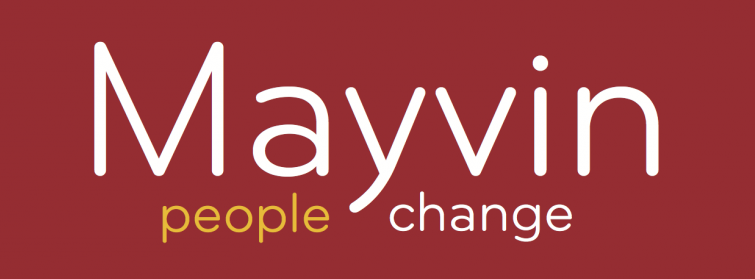The idea of using the self as an instrument of Organisation Development and Design (OD & D) is central to the field. At the heart of OD & D is the notion that human systems are fundamentally different to mechanistic systems. As human practitioners intervening in human systems, we necessarily use our ‘self’ to do what we do.
This tool sheet summarises the central points of Mayvin Director Martin Saville’s chapter on the subject in Field Guide for Organisation Development: Taking Theory into Practice, published by Gower.
This notion of 'use of self' doesn’t belong just to Organisation Development & Design. Using the self as an instrument is a fundamental idea in other fields too, for example leadership development, facilitation, coaching and therapy.
The subject of self as instrument is wide ranging because the self is in fact a rather versatile instrument which can be put to many uses. People in the field often talk of using the self as a diagnostic instrument or in terms of ‘being the change’. So, we can use the self for diagnosis and intervention.
The Self as a Diagnostic Instrument
OD & D practitioners can use their own impressions and intuitions as diagnostic data. Consider the following example:
I once enjoyed a lunchtime conversation with a client, an OD & D manager, in which we found ourselves creating an ‘alternative world’ for her company as if it was an airliner on a long-haul flight. This was no ordinary airliner because whenever the pilot tried to change airspeed, heading or altitude, unexpected things happened. For example, pushing the throttle forward caused the toilets in the aeroplane to flush. Meanwhile the controls for the reclining seats in First Class were connected to the engine and main control surfaces so that passengers were inadvertently causing mayhem. Yet somehow this aeroplane was still in the air, getting where it needed to go, albeit spending half its time flying upside down or dangerously close to a stall.
This conversation started out as a bit of irreverent fun; we needed to blow off some steam after running a tough workshop. But as we talked, it became clear that our alternative world contained some useful insights about leadership, decision-making and culture. Our fantasy also acknowledged the fact that while imperfect, the organisation was successful and that we had to be careful not to disrupt what was working well. Subsequently, another realisation came to light. It dawned on us that the most useful insights from this ‘alternative world’ were contained in the elements that caused us the most hilarity at the time. It was as if the funnier (and perhaps edgier) they were, the more they contained something important that could not be talked about in some more ‘normal’, rational ways.
This is an example of using the self for diagnosis. Clearly the fantasy said plenty about the OD & D practitioners themselves; but it also said something about the organisation. Knowing the difference is key. It is for this reason that OD & D practitioners need to be able to hold up their own perspective for examination and scrutiny.
In this example, the OD & D practitioners used their aeroplane fantasy as the diagnostic data. It is also possible to use physical sensations, images, emotions, turns of phrase or music that comes to mind.
Countertransference
Another way in which the self can be used as a diagnostic instrument is through the therapeutic notion of ‘countertransference’ in which the practitioner feels something ‘on behalf’ of another individual or group. If the practitioner can catch this, it once again offers potentially useful diagnostic data, providing the practitioner has the self-awareness to separate out what is about the other person or group, from what is about them. Here is an example:
I am facilitating a meeting with senior executives, all of them highly effective in their domains of expertise. The conversation is stilted and punctuated by long silences. I notice my tummy rumble and feel a flutter in my belly. Anxiety? Or am I just hungry, in spite of the good breakfast I recently enjoyed? I consider the matter in hand. I need this session to work. Will my needs be met? And then... will this group feed my needs?
My attention is taken by a sigh on my right. ‘This is feeling really stodgy, like… treacle sponge’, says a man. I decide to take a risk. ‘It’s funny you should mention food’, I say, and I share my daydream about needing to be fed. This leads to an interesting conversation. It turns out that everyone is feeling anxious about getting their needs met. The group relaxes a little. We start tentatively, but soon we are in an animated conversation, getting bolder about where we do and don’t trust each other, the blockers and enablers, and what it would take to be more open. I breathe a sigh of relief.
Here the practitioner felt something in him, noticed it, reflected on it, offered it up to the group tentatively. And it turned out to be useful.
‘Being the change’
Bringing a particular outlook or mindset is another way to use the self. The OD & D mindset includes ideas such as ‘multiple truths’, the importance of a systemic outlook, OD & D values and a focus on process. This mindset is valuable and often rare in organisations and means the OD & D practitioner is likely to see things that others miss. It also means that the OD & D practitioner is likely to stand for something a little different in the organisation that maybe the organisation doesn’t have enough of. They will pay attention to different things in meetings and have different types of conversation. They will perhaps do things a little differently; creating different groups by putting people together who don’t normally connect and by creating the conditions for these encounters to be productive.
Often the most successful OD & D practitioners in a system are different enough to offer another perspective and notice blind spots, but not so different that they are not credible or acceptable. Managing this difference takes political skill, self-awareness, boldness and resilience.
Holding our mindset at arm’s length and helping others to do so too – separating data from our interpretation of it
Our way of seeing the world shapes our understanding and interpretation of it, which shapes the actions we take. The Talmud says ‘we see the world not as it is but as we are.’ This matters because human beings also have the capacity to create self-fulfilling prophesies. This is called the Pygmalion Effect – people rise or fall to our expectations of them.
It is our mindset that shapes our interpretation. It is therefore important to separate out the data itself from our interpretation of that data. (For more on this, see the section in Peter Senge’s Fifth Discipline Fieldbook on Chris Argyris’ ‘Ladder of Inference’ model.)
OD & D practitioners spend a lot of time developing awareness of their own mindset, sensitivities, filters and biases. This is essential because they need to separate out what in their experience belongs to them and what belongs to the organisation, group or individual they are with.
Other uses of self
There are several other ways in which practitioners can raise their OD & D game through the use of self. These include:
- Being a ‘critical friend’ and speaking ‘truth to power’. Finding a way to say what everyone else is thinking so that it can be heard. Offering challenging feedback in a supportive way.
- Moving towards potentially challenging organisational and interpersonal dynamics rather than brushing them under the carpet.
- Creating psychological safety for the client system – ‘making it okay’ to talk about things people find difficult. Providing a container for anxiety or anger.
Developing the self as an instrument
Wise use of self requires similar skills to those required by coaches, therapists and facilitators. There is some technique involved, but it is also about developing and practising self-awareness.
The key ways to develop instrumentality include:
- Personal growth and development work – e.g. appropriate coach or facilitator training. Also ‘personal and professional group’ work
- Developing the ‘internal observer’ through mindfulness practices e.g. meditation
- Communications, feedback, impact and presence training
- Learning about human psychological processes
- Learning from other skilled practitioners
- Making a start (but not recklessly!)
- Practise
How to apply this to your own practice
Choose one aspect of self as instrument that strikes you as important or interesting to explore.
- ‘Audit’ how you are being / making use of it in your case – what do you do well? What could be better?
- What are the implications of this for you in relation to your growth and development as a practitioner?
- What actions might you take to raise your game?
Take a look at other aspects of self as instrument and repeat the steps.

